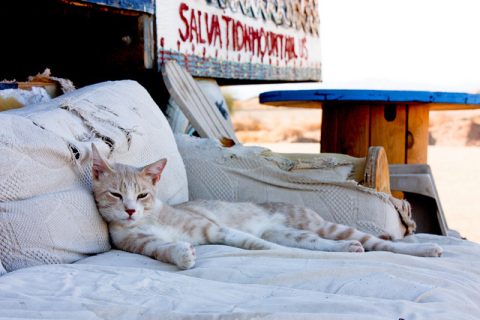I find myself in awe of the way you managed to convey without explicitly stating the young protagonist’s rite of passage of becoming an adult—a classic “iceberg” technique that brings Hemingway to mind. Who are your literary influences? What writers to do you admire?
Of course, if you want to write flash you have to read flash. I’ve learned a great deal about economy from Kathy Fish. I also admire Dorthe Nors and Stuart Dybek, two other masters of brevity. They have taught me to question every word I write and to be ruthless during the revision process.
A couple years ago I realized that most of my protagonists are teenagers. It’s not something I planned, but I find myself drawn to narrators between the ages of thirteen and eighteen. That being said, I read a lot of young adult literature as a way to inform my young protagonists. I’m a big fan of Ned Vizzini, Rainbow Rowell, and R.J. Palacio (read Wonder for a good cry).
Give us a “Behind the scenes” tour of your story—I’m curious about the juxtaposition of the day in the life experience of a typical teenager with that of a hardscrabble fishing crew in Croatia. How did you use one world to access and inform the other?
I came up for the idea for this story while watching an episode of Anthony Bourdain’s No Reservations about fishermen off the Croatian coast. It was bloody and violent. I found myself thinking, what if a young girl was on that boat? What would that look like? I started there. As I wrote, I realized that while the two worlds are radically different, there was a creepy overlap of sensory details and themes. High schools are filled with smells—body odors and cafeteria food and the formaldehyde from the frogs many of us had to dissect during biology class. Sex and uncertainty are everywhere. I was also interested in how the men would react to the presence of the girl on the boat. I was surprised to find that there were more connections to tease out between the two places than I originally thought.
Your title does some heavy lifting to contextualize (and explicitly state) your story’s theme. Could you talk a bit about your aims with your title (and what you look for when developing titles)? And I can’t help but wonder what other short story titles you are drawn to.
The flash fiction writer Pamela Painter says that titles are your only opportunity to give your readers additional information about the story that is not already on the page. I generally don’t like to explicitly state the theme in the title. I want the reader to do a little work to fill in the gap. However, when one of my friends read this piece, she said, “There’s puberty everywhere.” I realized that the information my readers needed that was not already on the page was for the word, the theme, of puberty to unexpectedly hit them right away, before the first sentence.
I admire Lydia Davis’s latest collection title, Can’t, Won’t. There’s so much weight behind those two words. They raise questions for me. What can’t I do? What won’t I do? Why? I’m also a huge fan of Jim Shepard’s short story “Love and Hydrogen,” which is about two crewmen in love on the Hindenburg. Both titles are simple, yet do complex work for the story.
I’m always impressed by stories that edge toward the surreal, but stay grounded in a sort of logical reality. How do you work with this edge in your own storytelling?
I try to include at least one unexpected scenario into each story. For example, the story I’m currently revising involves a young boy dissecting owl pellets in a basement with his grandmother and her friends. Who does that? No one. Yet, the rest of the boy’s life is rather relatable, so the reader (hopefully) goes along with it. In regards to this story, we may not identify with the narrator’s particular situation, yet many adults remember what it’s like to be a teenager doing what their parent tells them to do because they have other no other choice. To varying extents, we all know what it’s like to feel helpless. I believe that if you give your readers an emotion or scenario (like high school) that they empathize with, then they will trust you. This trust gives you the freedom to you play with the more surreal or quirky aspects of the world. That’s the fun part.
I understand that you teach composition and creative writing in Boston. That’s quite the literary town! How do you balance out writing, teaching, and (of course) all the readings and opportunities available for writers?
It’s not easy, but I’ve made realizations about myself as a writer and instructor over the past couple years that have helped me to maintain a better work-life balance. I’ve learned that I’m a morning writer. I find it hard to read student writing all day and then come home to my computer screen. The writing isn’t as precise. So, I write when I get up. I’ve also gotten better at setting boundaries about answering student e-mails. I write e-mail during specific times instead of all day, every day. This guideline frees up time and mental space for writing. I have a stellar writing group that keeps me on track.
I admit that I don’t make it to as many readings and literary events as I should. The question makes me a feel a bit ashamed, considering there are so many wonderful writers that find their way to Boston. I’m going to start going more often.



 Included in the price of SmokeLong Fitness:
Included in the price of SmokeLong Fitness: